This post may contain affiliate links.
When James and I pulled out the map picking our next stops, I noticed César E. Chávez National Monument right along our Central California driving route. It started a whole conversation about César Chávez, and how little we really knew.
ME: “He was an activist for farm laborers rights when we were kids, right?”
JAMES: “The only thing I remember is the short-handled hoe controversy…”
I didn’t know this, but turns out James was right. César Chávez was involved in the movement to get the short-handled hoe banned.
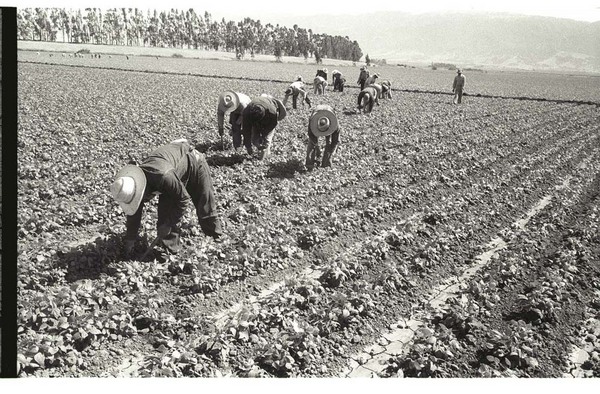
Photo Credit: Leonard Nadel, 1956, National Museum of American History. Farm workers using the short-handled hoe near Salinas CA.
Beyond that, we really didn’t know much about César Chávez or the United Farm Workers movement he was instrumental in organizing. We decided a stop was in order.
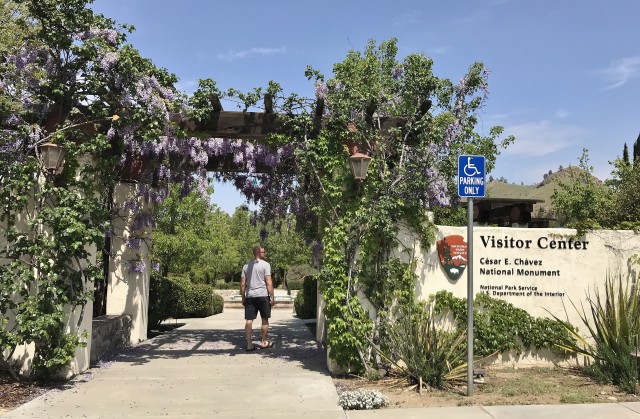
As y’all know I’m a huge plan-ahead kind of gal, so I doubt it surprises you to know I did a bunch of research before swinging in.
César Chávez National Monument is a 108 acre property that protects some of the sites that were most important for the farm workers’ rights movement he helped create, as well as the graves of both César Chávez and his wife Helen.
It only became a monument in 2012, and the National Park Service shares stewardship with the César Chávez Foundation on managing the monument. In fact the majority of the 108 acres is privately owned.
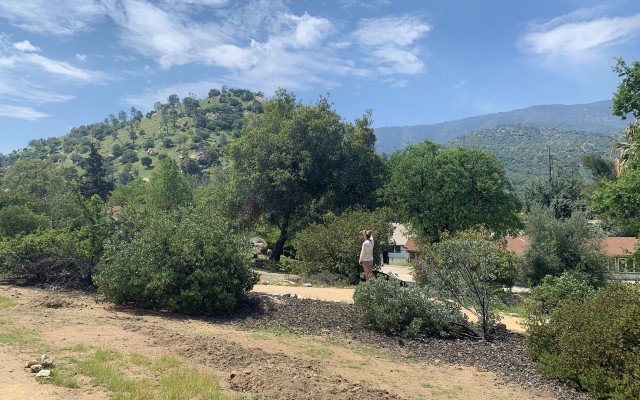
Parking is a little tricky for bigger RVs, but the park staff are very accommodating and welcoming to RVers. Look for the U-shaped driveway area on the side of the dedicated Visitor’s Center parking lot; you can park in there. Otherwise, pass by the Visitor’s Center and park farther up the road. Your safest bet is to give the park a call and they can provide you some parking suggestions. Of course that’s coming from me. Mrs. Iron-Out-Every-Detail-Beforehand.
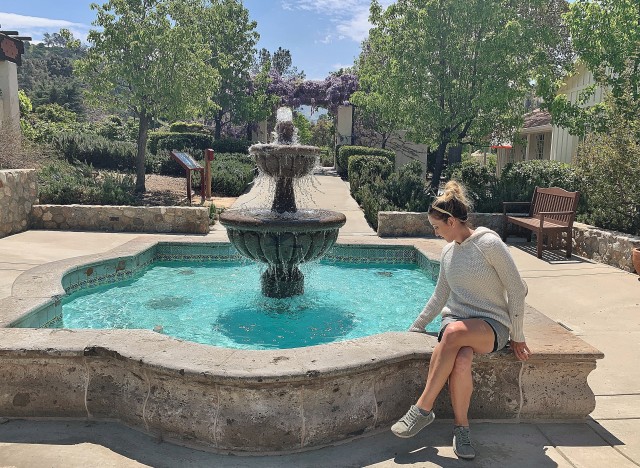
The first big thing that Chávez was involved in was the 1965 California Grape Strike, and you’ll learn about it as you tour the Visitor’s Center. His efforts led to a boycott of table grapes that eventually drew 17 million supporters across the country, and forced growers to agree to some of the first farm worker contracts in history.
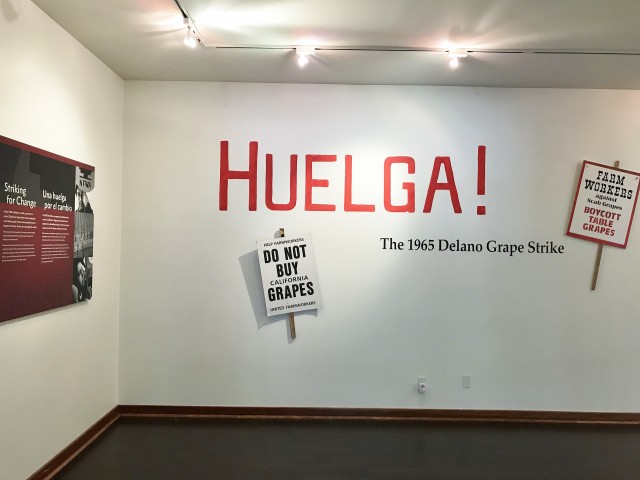
The whole ‘boycott’ thing wasn’t really heard of at the time, making this all the more significant. I wasn’t born just yet, so I don’t have any memories of my own. I was so curious to find someone with a memory of it, I started hitting up my older relatives and asking if they did. No one I asked remembers boycotting grapes, bummer. Isn’t it interesting that there are so many moments in our lives where the historical significance just buzzes right over our heads?
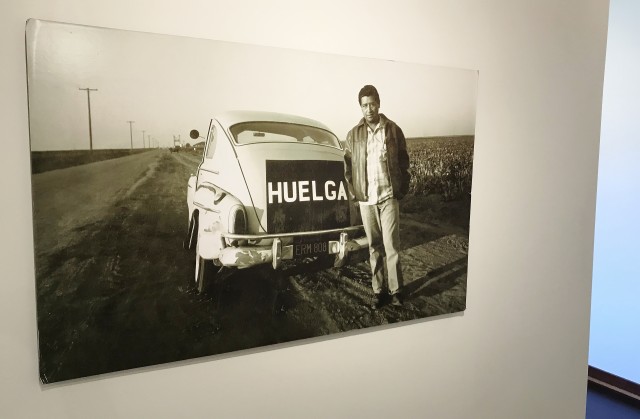
For me, the highlight of the Visitor’s Center was seeing Chávez’s office… and learning the painstakingly detailed work that went into re-creating it.
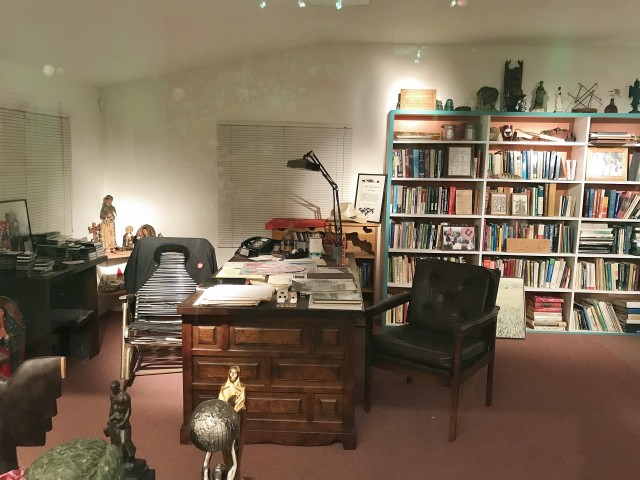
Since the building that housed his original office had to be demolished, some Smithsonian Institution experts catalogued each item in his office and its precise location… then it was all set up again and you can now see it exactly as he left it, through a window, as if he just ran out to grab a coffee or a bite to eat or something.
Push some buttons on the office window display and you’ll also hear information about Chávez and his work. I especially enjoyed hearing his granddaughter’s voice proudly talk about her grandfather’s life.
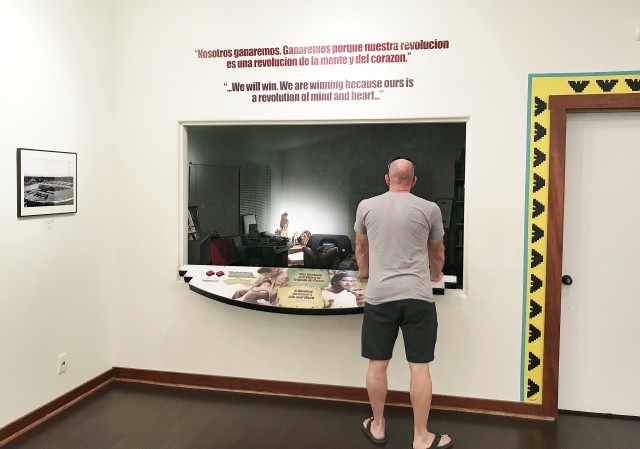
Before the property was turned into headquarters for the United Farm Workers (UFW), it was a State of California tuberculosis sanatorium in the early 1900’s. If you’re into dilapidated buildings like us, you’ll especially enjoy exploring the old buildings scattered around the grounds.
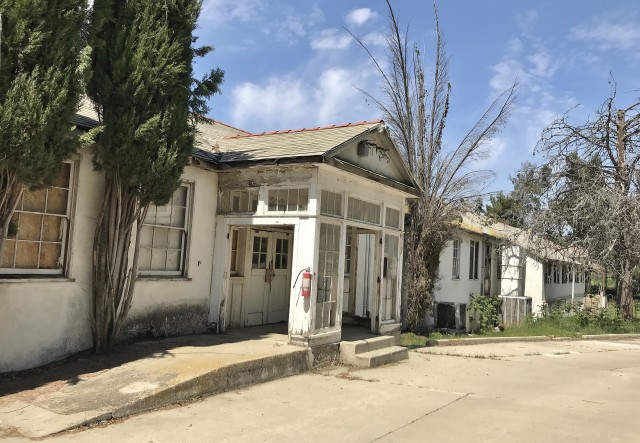
The largest building in the National Monument is referred to as “Building 4”, and it was built in the 1920’s as a tuberculosis hospital. The UFW converted it to a dormitory in the 1970’s. Today, it’s in pretty bad shape, and though you cannot go in, there are places you can peek through the windows and see inside:
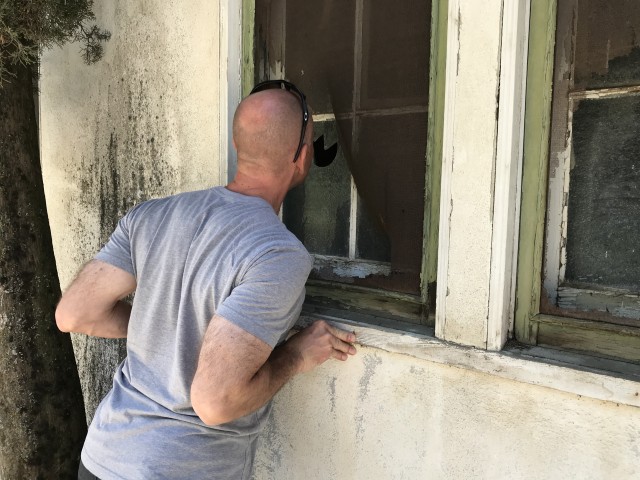
All sorts of treasures to see inside!!! We saw some old-timey medical lights in one room!
Building 5 is an interesting cross-shaped structure. It was built as a children’s hospital back in the 1920’s, and then in the 1970’s became the United Farm Workers Financial Management building:
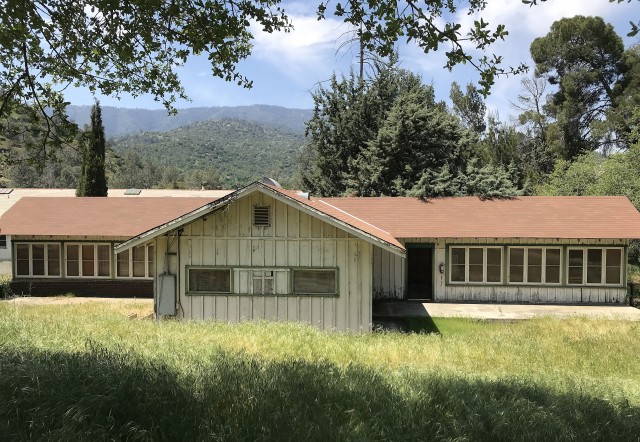
You’ll drive by the Quonset Hut as you enter the National Monument, which was built in the 1950’s as part of the TB hospital. It later became the security headquarters for the United Farm Workers:
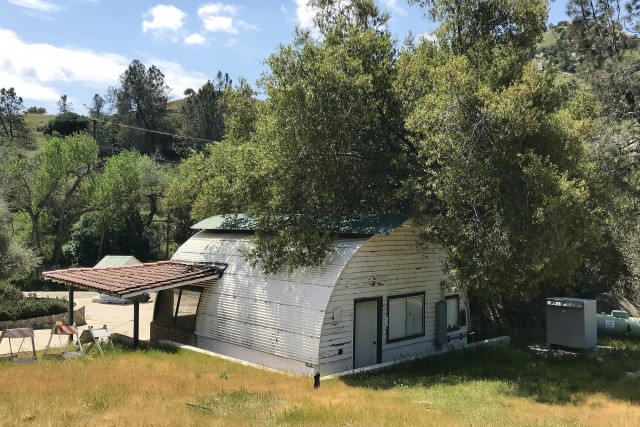
The Chávez Memorial Garden is right outside the Visitor’s Center and includes the Chávez burial site. César Chávez and his wife Helen are buried side by side with simple stone markers in a beautiful and serene setting. They had 8 kids and tons of grands.
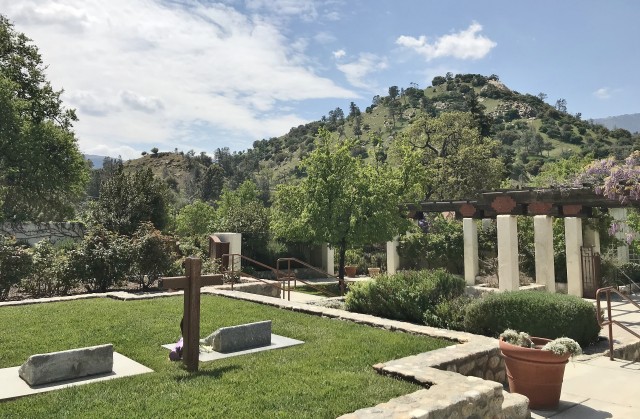
Most National Monuments don’t focus on individuals, so that makes the César Chávez National Monument all the more unique and special. But I’d bet if César Chávez was here, he’d say he doesn’t want this Monument to honor just him alone… instead let it honor the movement he put his heart and soul in.
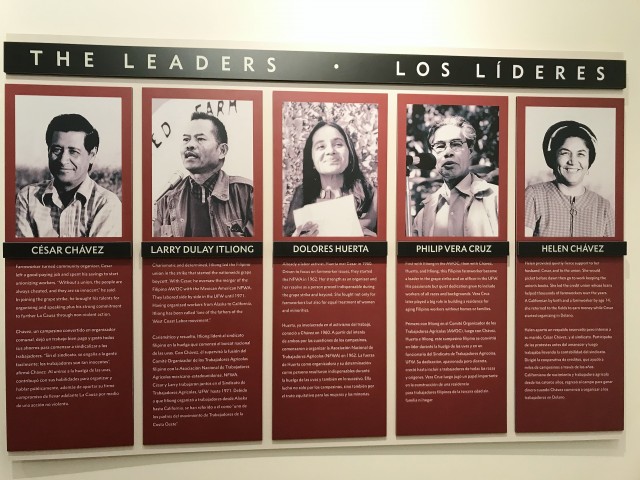
I found our stop here very inspiring. My take-away from it all? When we are armed with determination and hope, we can bring about change.
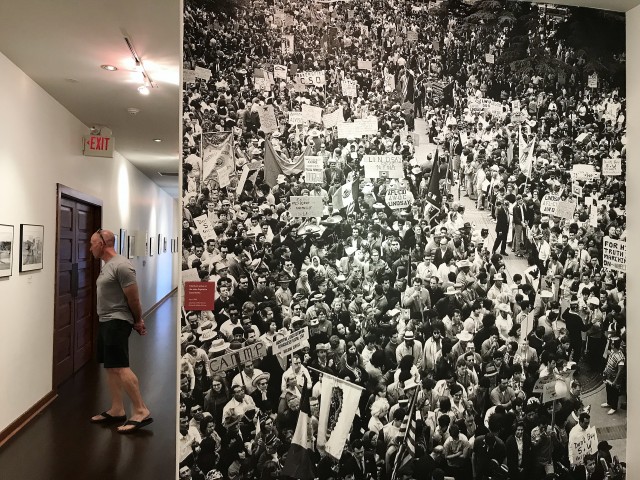
I found these beautiful words César Chávez wrote in a prayer he once gave for the farm workers:
Let the Spirit flourish and grow,
So that we will never tire of the struggle.
Let us remember those who have died for justice,
For they have given us life.
Help us love even those who hate,
So we can change the world.
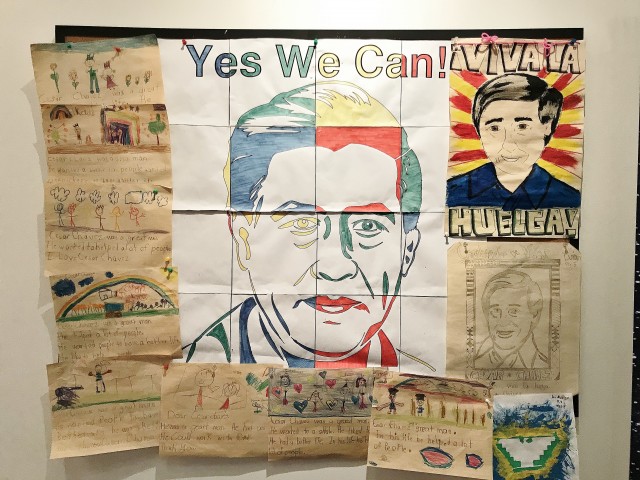
I’m so glad we stopped. And hey, if any of you have any memories of César Chávez and either his grape strike or any of his activism work, I’d love to hear about it! Comments below always appreciated!



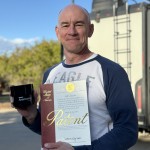







We live in Texas and have traveled a good deal in the southwest. I am glad to see Chavez’ name on street signs across the region, and I look forward to seeing this park when we begin our own odyssey soon across the US in our 59KL!
I enjoyed the story told about this National Monument. It hit home when you saw Building 4, a TB Hospital in the 1920’s.
It was in the 20’s or early 30’s that a dear friend of mine spent a lengthy time of her childhood in a TB sanitarium. I was taken back with her story and realized that my early life wasn’t as bad as I thought it was. She’s passed away a long time ago and I’ll never forget the experiences that she shared with me.
Say hello to Mel
Karen
Thank you for sharing your story! I’ve never visited the west other than the coast and I have a strong desire to explore the parks and monuments like you are doing. Your post made me read about Cesar Chavez, who I knew very little about. This is now one of the monuments on my list of to-sees!
I’m in my early 70s, and I can remember boycotting grapes. We lived in San Francisco at the time and made an effort to try to help the farmworkers. Cesar Chavez was a sincere simple man who never lost sight of his roots.
I lived in and was going to college in CA at the time. I remember Cesar Chavez and the United Farm Workers were on the news a lot, but I don’t remember personally boycotting grapes. I would have if I’d known about it. I came by that National Monument on my way from AZ to WA in March. I thought about stopping but I had a long driving day planned. Now I wish I had.
Thanks for sharing your memories! I suppose you being in college right there in CA at the time would have had more exposure to Chavez and the UFW’s efforts than my own parents who were back in their small Midwestern town and physically disconnected from it. And hopefully you’ll find yourself driving by the National Monument again someday and next time you can swing in! xoxo
I was living in the Bay area at the time and vividly remember the grape strike. We shopped at the Co-op store in Berkeley, which supported the strike and didn’t sell grapes. When the workers won the strike the Co-op was a center of celebration. They had the grapes displayed in the union boxes with the black eagle! We were happy to have grapes again, but more happy that there was finally some justice for the workers!
We followed all the strike process in the underground newspapers and its important to remember today that what we see in the mainstream news comes to us through a corporate filter and often doesn’t reflect the true state of reality.